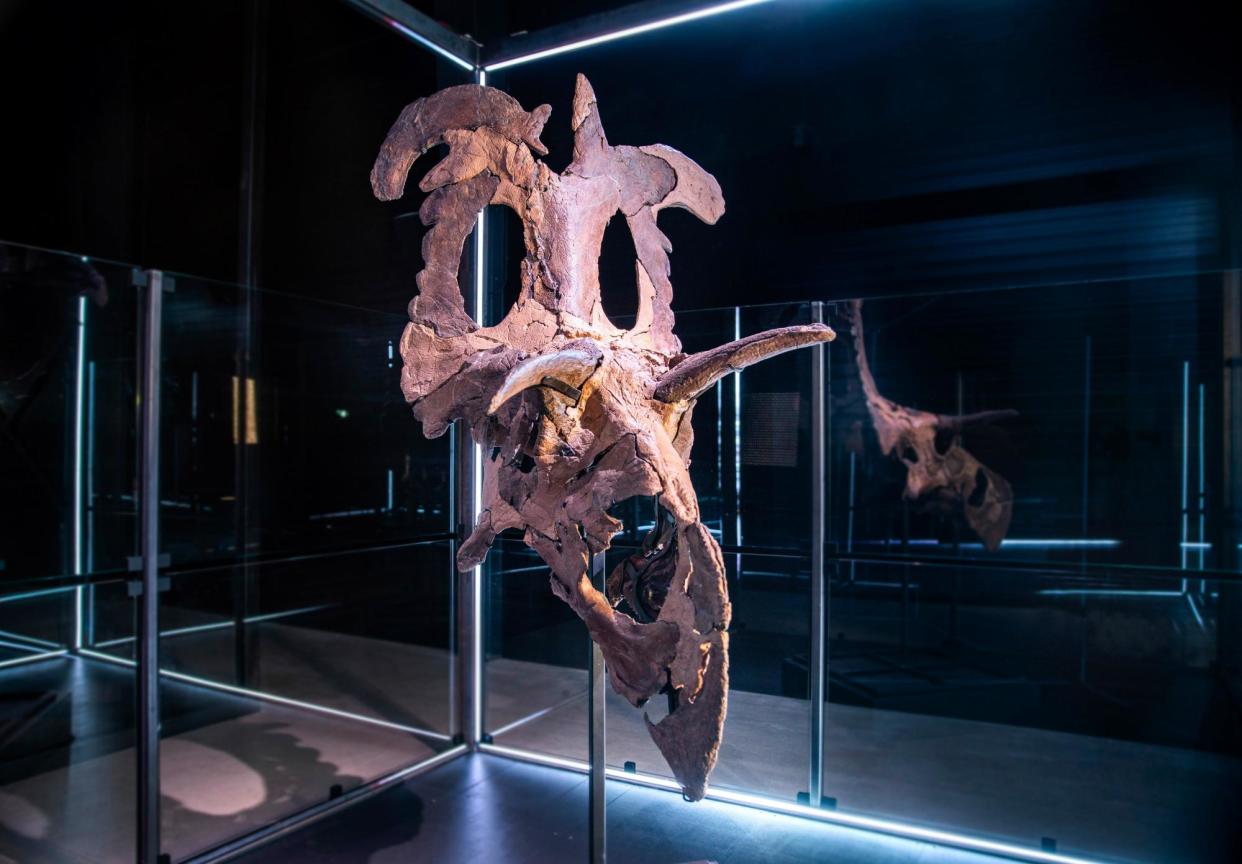Dinosaur with ‘blade-like nasal horns’ dug up in Montana may be new species

Scientists may have dug up a new dinosaur species in the badlands of Montana.
The Lokiceratops is possibly the fifth species of a large, horned family of dinosaurs found in the Kennedy Coulee, a dry gorge of fossil-bearing rocks along the border of Montana and Alberta, Canada.
Part of the Ceratops family from the late Cretaceous period which includes the well-known Triceratops, the Lokiceratops roamed the Earth nearly 78m years ago. Back then, the now-dry climate was a swampland.
The dinosaur is named after Loki, the god of trickery and deception from Norse mythology. But the Lokiceratops’ connection to Loki has more to do with its physical features than its personality.
Like Loki, who wields blades in the stories, the newly discovered species sported two large “blade-like nasal horns”, similar to the those of a reindeer or caribou, as well as fanned-out frills around parts of the head and neck.
Mark Loewen, one of the paleontologists who contributed to an article on the find in the scientific journal PeerJ, told Science News: “It’s becoming more clear that [horned dinosaurs] were using these [bony features] as ornaments, in order to attract mates or intimidate rivals of the same species.”
The Lokiceratops bears a striking resemblance to other species discovered in the region, such as the Medusaceratops.
Related: Three boys left ‘completely speechless’ after finding T rex bone in North Dakota
Both are large herbivores with similar key features, but the Lokiceratops is “at least 20% larger than known adults of Medusaceratops”, according to the PeerJ article.
Yet some scientists disagree that the Lokiceratops, Medusaceratops or other members of the Ceratops family found nearby – like the Wendiceratops and Albertaceratops – are different species. They are actually evolutions of the same species, they argue.
The University of California Museum of Paleontology says: “In terms of animals living today, it may be best to think of ceratopsians – at least the larger ones – as analogues of elephants or rhinos: large herbivores in herds that relied on horns and attitude to protect themselves.”
“The horned, frilled dinosaurs in the family Ceratopsidae are found only in the Late Cretaceous of North America,” according to the museum. “They are among the last of the dinosaurs (other than the birds of course).”

 Yahoo News
Yahoo News 
